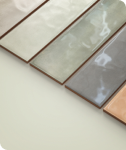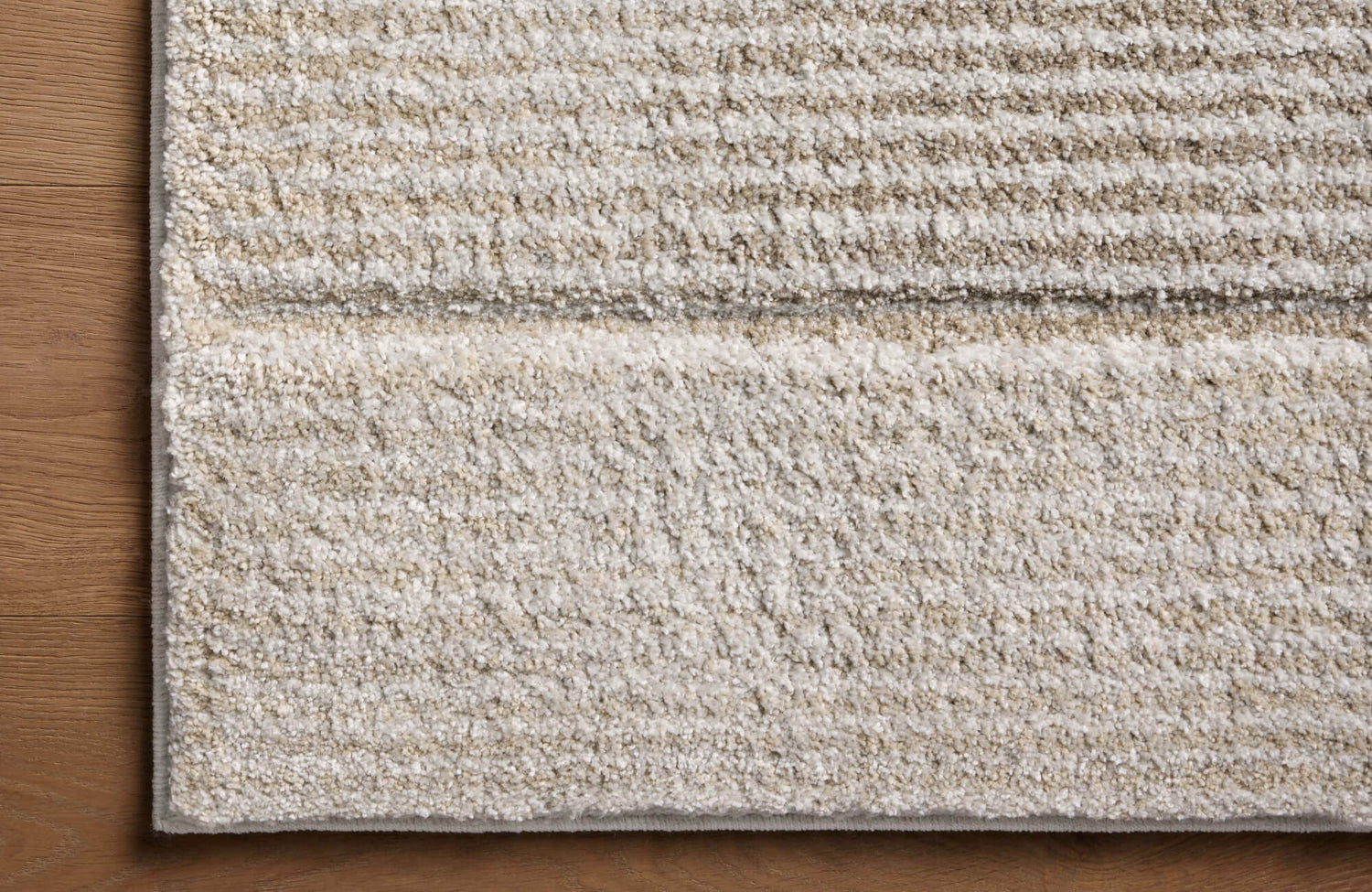When choosing the right rug for your home, the material you select can make all the difference in comfort, durability, style, and even sustainability. Polypropylene rugs and cotton rugs are two popular options, each offering distinct advantages depending on your needs and lifestyle. In this article, we take a closer look beyond basic comparisons, examining everything from environmental impact and maintenance to design flexibility and everyday practicality. By the end, you will have a clearer and more balanced understanding of which material might be the better fit, or why the answer may not be as straightforward as it seems.
The Essentials of Fiber Fundamentals
To truly understand the battle of rug fibers, we must first examine their very essence. We'll explore the fundamental chemical structures and construction methods of polypropylene rug and cotton rug, revealing the root of their differing properties.
Molecular Look
At a fundamental level, polypropylene and cotton rugs differ significantly in their chemical makeup. Polypropylene is a synthetic thermoplastic polymer, essentially a long chain of repeating propylene units derived from petroleum. This structure makes it inherently hydrophobic, meaning it repels water molecules. Cotton, on the other hand, is a natural cellulose fiber composed of long chains of glucose molecules. Its structure contains hydroxyl groups that readily attract and absorb water, making it hydrophilic. These molecular personalities dictate many of their subsequent properties.
Weaving Construction
Rugs made from both fibers can be woven or tufted using various techniques, influencing their density and texture. Polypropylene fibers, often extruded into continuous filaments, can create durable, tightly woven, or dense cut-pile rugs. Cotton fibers, being shorter staples, are typically spun into yarns before weaving or tufting, resulting in a softer, often less dense feel. While polypropylene rugs can mimic the look of natural fibers, cotton generally offers a more traditional, softer hand feel that many associate with comfort.
Durability and Surface Wear
Beyond the initial look and feel, a rug's true value lies in its ability to withstand the rigors of daily life. This section dissects the durability of polypropylene rug and cotton rug from multiple angles, going beyond simple wear and tear to examine their resilience, stain resistance, and reaction to sunlight.
Rug Resilience
When it comes to resisting the constant pressure of daily use and furniture, polypropylene exhibits superior resilience. Its synthetic fibers possess a natural elasticity, allowing them to bounce back more readily from crushing, helping the rug retain its pile height and overall appearance in frequently used areas. Cotton fibers, lacking this inherent springiness, tend to flatten more easily over time, showing wear patterns more quickly.
Stain Resistance and Spill Defense
In the inevitable event of spills, a polypropylene rug holds a significant advantage. Its hydrophobic nature means liquids tend to bead on the surface rather than being absorbed into the fibers. This inherent stain resistance makes cleanup much easier, often requiring just a quick wipe. Cotton, being highly absorbent, acts like a sponge, allowing spills to penetrate deeply into the fibers. This makes stain removal more challenging and often necessitates specialized cleaning products and techniques.
Sunlight and Rug Fading
The relentless exposure to sunlight can take a toll on any rug's vibrancy. Polypropylene rug generally demonstrates good resistance to fading and degradation from UV rays. The synthetic polymers are less susceptible to the chemical breakdown caused by prolonged sun exposure. Cotton rug, being a natural fiber, is more vulnerable to UV damage, which can lead to color fading and weakening of the fibers over time. While treatments and specialized dyes can improve the lightfastness of both materials, a polypropylene rug often retains its color integrity for longer under intense sunlight.

Aesthetics and Affordability
Beyond functionality, rugs are key design elements that contribute significantly to a room’s overall style and investment value. This section explores the visual versatility and cost considerations of polypropylene and cotton rugs.
Color Play and Design Versatility
Both polypropylene and cotton rugs can be dyed in a wide spectrum of colors and fashioned into intricate patterns. Modern dyeing techniques allow for vibrant and long-lasting hues in both materials. Polypropylene fibers are solution-dyed, meaning the color is integrated into the fiber during manufacturing, resulting in excellent colorfastness and resistance to fading. A great example is the Broderick Polypropylene Pile Rug in Oat / Iron, as shown in the photo above, which showcases how rich, earthy tones can remain vibrant even with regular use. Cotton, while also taking dyes well, can sometimes be more susceptible to fading over time. In terms of design flexibility, both fibers can be used to create a diverse range of styles, from traditional to contemporary. However, the inherent sheen of some polypropylene fibers can lend a slightly different visual texture compared to the often more matte finish of cotton.
Balancing Budget and Long-Term Value
Generally, polypropylene rugs tend to be more budget-friendly than comparable cotton rugs. This difference in initial cost can be attributed to the relatively lower price of raw polypropylene materials and potentially less complex manufacturing processes. However, when evaluating the long-term value proposition, factors like durability and lifespan come into play. Polypropylene rugs' resistance to stains and wear could mean they need replacing less frequently, potentially making it a more cost-effective choice over time. Conversely, a higher-priced cotton rug, if well-maintained, can also last for many years, offering a natural aesthetic appeal that some consider worth the investment.
Understanding Texture and the Sensory Experience
The tactile experience of a rug plays a significant role in its overall appeal. Cotton rugs are often praised for their inherent softness and natural warmth underfoot. The spun yarns create a plush and comfortable surface that many find inviting. Polypropylene rugs, while advancements in manufacturing have improved their softness, can sometimes feel less luxurious to the touch compared to natural cotton. However, polypropylene rugs can be engineered into various textures, from dense and low-pile to shaggy and plush, offering a broader range of tactile options.

Matching Rugs to Lifestyle Needs
Beyond price and appearance, the right rug choice depends heavily on how it fits into your daily living environment. Let’s explore how polypropylene and cotton rugs perform under different lifestyle needs.
Rugs for Busy Families
For households with children and pets, where spills and tracked-in dirt are inevitable, polypropylene rugs emerge as the more practical choice. Its exceptional stain resistance and easy maintenance make accidents less stressful to manage. The durability of polypropylene rugs also allows them to withstand the constant activity common in busy homes. As discussed earlier, their resilience against wear ensures they maintain their appearance even in well-used spaces.
Rugs for Light-Use Spaces
In more formal or lightly used areas, such as bedrooms or guest rooms, the priorities often shift towards comfort and natural aesthetics. Cotton rugs can excel in these spaces, offering a soft and luxurious underfoot feel that enhances the sense of tranquility. However, it is important to acknowledge that cotton rugs in these settings still require more diligent care, with spills needing immediate attention and occasional professional cleaning.
Hypoallergenic Rugs
For individuals with allergies or respiratory sensitivities, the choice of rug material can significantly impact indoor air quality. Polypropylene rugs’ moisture resistance makes them less likely to harbor mold, mildew, and dust mites. Its smooth, non-absorbent fibers also trap fewer airborne particles. In contrast, cotton’s absorbent nature can create a more hospitable environment for allergens, particularly in humid climates.

Understanding the Environmental Footprint
Beyond the tangible aspects of durability and design, environmental impact plays an increasingly important role in rug selection.
Production to Post-Consumption
Producing polypropylene rugs relies on fossil fuels as its primary raw material. The manufacturing process involves energy-intensive polymerization and extrusion, contributing to greenhouse gas emissions. Waste generation during production is also a concern. Cotton rug, a natural fiber, requires significant land and water resources for cultivation and often relies on heavy pesticide use unless organically grown. While cotton is biodegradable, polypropylene is technically recyclable but not widely processed in many areas.
Microplastics
A significant environmental concern associated with synthetic materials like polypropylene is the shedding of microplastics. These tiny fibers enter wastewater systems and can find their way into oceans, posing a threat to marine ecosystems. Cotton fibers, being natural, biodegrade harmlessly when shed. As noted earlier, while microfiber shedding from polypropylene is an ongoing concern, research and new technologies are aiming to mitigate this issue.
Innovation and the Future of Rugs
The rug industry is not static; ongoing innovation is shaping the future of floor coverings.
The Rise of Blended and Hybrid Rugs
Recognizing the strengths of different fibers, manufacturers are increasingly creating hybrid rugs. Blends of polyester and polypropylene rugs are particularly common, offering a combination of enhanced durability, stain resistance, and improved softness compared to pure polypropylene. These blends aim to provide more comfort while retaining the easy-care benefits of synthetic fibers. Blends of polypropylene and cotton, for example, aim to deliver the stain resistance of synthetic fibers with the soft comfort of natural materials. These hybrids strive to overcome the limitations of single-fiber constructions.
Eco-Conscious Choices for Sustainable Rugs
Growing environmental awareness is driving innovation in rug production. For synthetic fibers like polypropylene, this includes efforts to use bio-based feedstocks and energy-efficient manufacturing. Cotton initiatives focus on organic farming practices and sustainable dyeing processes. Consumer demand continues to push manufacturers toward greener production methods for both synthetic and natural options.
How Smart Rugs Are Changing Home Spaces
While still in its nascent stages, the concept of "smart rugs" hints at an intriguing future for floor coverings. Imagine rugs with integrated sensors for temperature control, ambient lighting, or even pressure detection for safety or interactive displays. The base fiber material will likely play a crucial role in the feasibility and functionality of such innovations. Durability and the ability to withstand cleaning without damaging embedded electronics will be paramount. Polypropylene's inherent moisture resistance might make it a more suitable base for certain types of integrated technology compared to absorbent cotton. Speculative ideas include rugs that can monitor foot traffic patterns for home security, adjust lighting based on occupancy, or even provide gentle tactile feedback for navigation or therapeutic purposes.
Choosing Between Polypropylene and Cotton Rugs
The question of whether polypropylene is "better" than cotton for rugs doesn't yield a simple yes or no. Each material boasts distinct advantages and disadvantages that cater to different needs and preferences. Polypropylene rugs shine in durability, stain resistance, and affordability, making them a practical choice for busy households. Cotton rugs, on the other hand, offer a natural softness and aesthetic appeal, though they demand more careful maintenance. The "better" choice hinges on a careful evaluation of lifestyle, budget, and priorities, often revealing that the ideal rug might even involve a thoughtful blend of both worlds or a completely innovative alternative.










